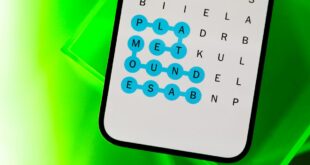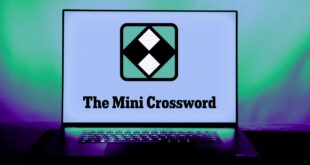Two astronauts are stranded in space, and their spacecraft — with no crew — left them there a week ago and returned to Earth.
It sounds like the pitch for a creepy science-fiction or horror movie, but that’s the scenario that unfolded when Boeing’s Starliner capsule left astronauts Sunita “Suni” Williams and Barry “Butch” Wilmore on the International Space Station and successfully landed at White Sands Space Harbor in New Mexico last Saturday.
But for the two seasoned astronauts stuck on the ISS, the situation isn’t nearly as Hollywood-scary as it sounds. They spoke to the media during a live press conference on Friday and helped break it down.
Who are the astronauts?
Wilmore, 61, and Williams, 58, are veteran astronauts, both naval officers and former test pilots. Williams has been a NASA astronaut since 1998, and Wilmore since 2000. Both have plenty of experience in space.
Williams is the former record holder for most spacewalks by a woman (seven) and most spacewalk time for a woman (50 hours, 40 minutes), and in 2007, she ran the first marathon by any person in space.
In 2009, Wilmore piloted the Space Shuttle Atlantis on its mission to the ISS, and in 2014, he was part of the ISS crew that used a 3D printer to manufacture a tool — a ratchet wrench — in space, the first time humans manufactured something off-world.
What are the astronauts saying?
During a live news conference on Friday, Williams said that despite knowing their mission was scheduled to take only eight days, they’d both been “training for a number of years” for it. They’re fully qualified to remain in space for an extended period of time, and to help pilot the SpaceX Dragon spacecraft that’ll bring them home next year.
“It’s very peaceful up here,” Williams said, though she added that they miss their families back on Earth.
The astronauts are working on research, maintenance and data analysis during their extended stay.
“We are having a great time here on ISS,” Williams said in a news conference held from orbit in July. “I’m not complaining. Butch isn’t complaining that we’re up here for a couple of extra weeks.”
Butch Wilmore and Suni Williams responding to media questions back in March.
What was their original mission in space?
Wilmore, as commander, and Williams, as pilot, traveled to the ISS on a 15-foot-wide, Boeing-made capsule called Starliner. They launched on June 5 and docked with the ISS on June 6. NASA hopes Starliner will give the organization a new way to get crews to and from the ISS, and the fact that it’s Boeing-made is another sign that NASA is starting to lean on the private sector for its human spaceflight options, The New York Times reported.
Wilmore and Williams’ ISS mission was supposed to last a mere eight days, during which they’d test out aspects of Starliner and see how it operates with a human crew in space. But due to complications with Starliner, the two astronauts are still up there and won’t be back before 2025. They’ve kept busy — working with the ISS Expedition 71 crew to perform research and maintenance activities, NASA said.
How did they get stuck in space?
The Starliner was delayed in May due to a problem with a valve in the rocket. Then engineers had to fix a helium leak. That’s all bad news for Boeing, which is competing with SpaceX, which has been transporting astronauts to the ISS since 2020, making over 20 successful trips to the space station.
Starliner finally launched, atop an Atlas V rocket, on June 5, but some problems came along with it. NASA announced that three helium leaks were identified, one of which was known before flight, and two new ones. In addition to the leaks, the crew had to troubleshoot failed control thrusters, though the craft was able to successfully dock with the ISS.
SpaceX has had failures too. A Falcon 9 rocket exploded on the launchpad in 2016. In July, a Falcon 9 rocket experienced a liquid oxygen leak and deployed its satellites in the wrong orbit, The New York Times reported. And a Falcon 9 rocket last week lost a first-stage booster when it toppled over into the Atlantic Ocean and caught fire.
But that said, SpaceX has more than 300 successful Falcon 9 flights to its credit.
When and how are the astronauts coming home?
NASA has been quick to report that the astronauts aren’t in any danger.
“There is no rush to bring (the) crew home,” NASA said in a statement last month. “This is a lesson learned from the space shuttle Columbia accident. Our NASA and Boeing teams are poring over data from additional in-space and ground testing and analysis, providing mission managers data to make the best, safest decision on how and when to return crew home.”
NASA said on Aug. 24 that it had decided to return Starliner to Earth without a crew, and the spacecraft landed safely in New Mexico on Sept. 6.
Wilmore and Williams will be brought home on the SpaceX Crew-9 Dragon spacecraft early next year and “will continue their work formally as part of the Expedition 71/72 crew through February 2025,” the space agency said in a statement. “They will fly home aboard a Dragon spacecraft with two other crew members assigned to the agency’s SpaceX Crew-9 mission.”
That mission will launch no sooner than Sept. 24, NASA said. Four crew members were originally scheduled to be on board at launch, but two will now stay behind to make room for Wilmore and Williams’ return trip.
“Spaceflight is risky, even at its safest and most routine,” NASA Administrator Bill Nelson said in a statement on Aug. 24. “A test flight, by nature, is neither safe, nor routine. The decision to keep Butch and Suni aboard the International Space Station and bring Boeing’s Starliner home uncrewed is the result of our commitment to safety: our core value and our North Star.”
Stuck in space: a timeline
- May: Starliner launch delayed due to a problem with a valve in the rocket, and then a helium leak.
- June 5: Starliner launches with Williams and Wilmore on board.
- June 6: Starliner docks with ISS despite dealing with three helium leaks and failed control thrusters.
- Sept. 6: Starliner departs ISS and lands in New Mexico, leaving Williams and Wilmore behind.
- Sept. 24 onward: SpaceX Crew-9 mission will launch with two crew members on a Dragon spacecraft.
- March 2025 onward: SpaceX Dragon spacecraft will return to Earth with Williams, Wilmore and two other astronauts.
 meganwoolsey Home
meganwoolsey Home



